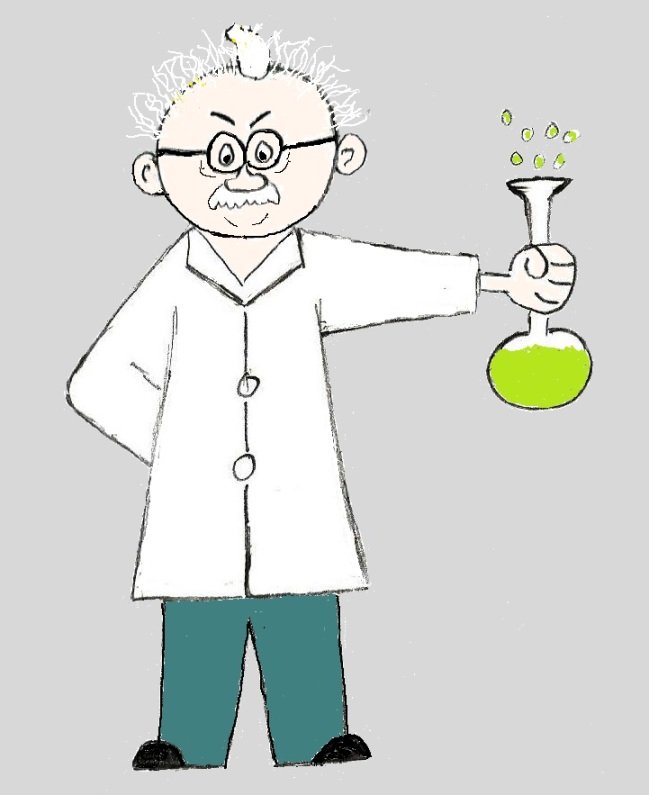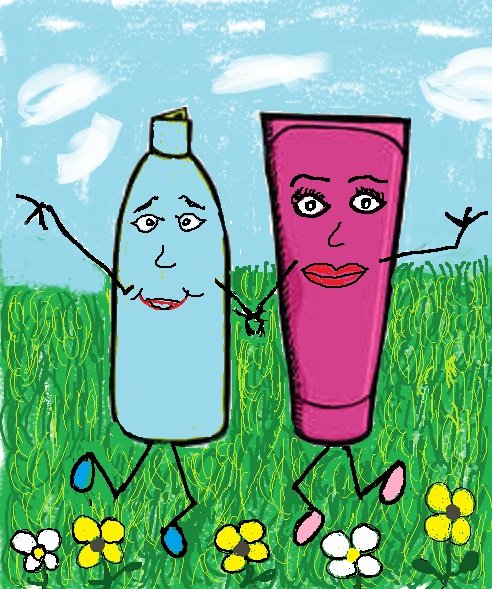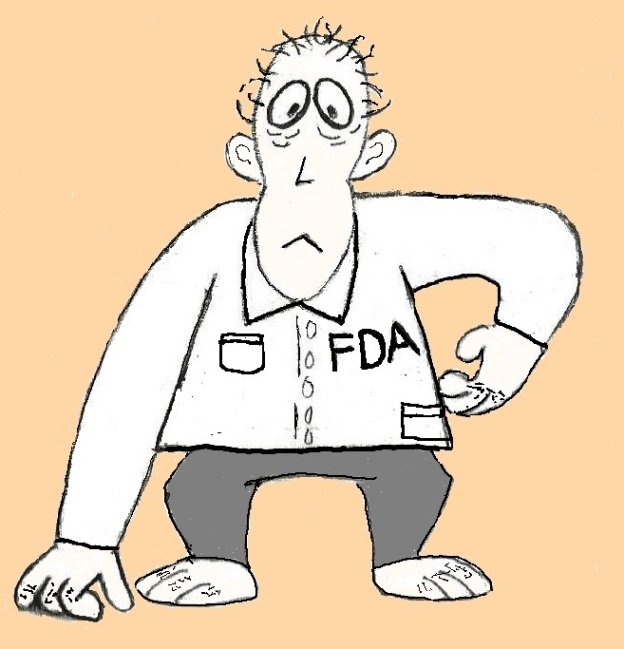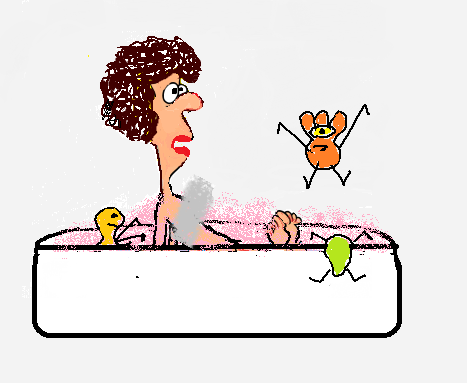- Home
- Toxic Chemicals in Personal Care
- Hand Sanitizers
Hand Sanitizers and BPA – The Dangerous Double Whammy
Hand sanitizers are supposed to protect your
health. Instead, the chemicals they contain open the door to increased exposure to the toxins in them and in anything
you touch. There are simple solutions to avoid this double whammy of toxins.

First Whammy - The Chemicals in Hand Sanitizers
Just like with so many other skin care products on store shelves, hand sanitizers contain a mix of chemicals, such as parabens and fragrance, that can cause cancer, are toxic to your organs and are endocrine disrupters.
There are also contamination concerns with some of the chemicals in sanitizers. These contaminants are created during the manufacturing of the product. For example, tocopherols, a class of naturally occurring chemical compounds related to Vitamin E, could be contaminated with hydroquinone, an organ system and skin toxicant.
Chemicals like PEG-60 lanolin and ceteareth can be contaminated with the very toxic ethylene oxide, a known human carcinogen and 1,4-dioxane, a probable carcinogen. And some of the preservatives used in hand sanitizers release formaldehyde, which is also a carcinogen.
The antibacterial agent triclosan is the most notorious chemical in sanitizers. Because it is an endocrine disrupter and a carcinogen, it has been replaced in many sanitizers by alcohol.
But alcohol is not without its health risks. Ethanol (Ethyl alcohol) is the most common alcohol used in hand sanitizers, usually at a concentration of 63% to be effective. It can irritate skin but is generally considered safe for use in cosmetics. The main issue with the alcohols used in hand sanitizers is that they are skin penetration enhancing chemicals, which is the second whammy that comes from using these products.
Second Whammy – Increased Skin Absorption
Your skin provides a pretty effective protective barrier for your body. Skin penetration enhancing chemicals open this barrier up, allowing toxins to be more easily absorbed into your body. These chemicals can be found in many skin care products, including hand sanitizers.
In my opinion, this group of skin absorbing enhancers are some of the more dangerous chemicals used in skin care products. First, they increase the absorption of toxins from the products you are using. Second, these mixtures of skin penetration enhancing chemicals can increase by up to 100-fold your skins absorption of fat-loving (lipophilic) toxic compounds.
Examples of skin absorption enhancers in sanitizers include:
Propylene glycol – (yep, the stuff in antifreeze)
Ethanol (ethyl alcohol)
SD alcohol 40 or Denatured alcohol - a mixture of ethanol with a denaturing agent.
Sulisobenzone (benzophenone-4) - also a sunscreen ingredient
Alumina - the name used for the inorganic compound aluminium oxide
The dangers of these absorption enhancers have been studied in sunscreens and body lotions. Applying sunscreen and then DEET insect repellent has been found to greatly increase the amount of DEET absorbed into the skin. The commonly used herbicide 2,4-D (aka Weed and Feed) was found to be absorbed into skin faster and at higher amounts after using sunscreen and body lotion.
Researchers are now beginning to look at the risks of these absorption enhancers in hand
sanitizers.
Hand Sanitizers and BPA
Does this sound familiar? You’re running errands and you stop at a restaurant to grab a bite. You order, sit down and spritz on some hand sanitizer, throw the receipt in your purse and chow down. Scientists recreated that scenario to study how much BPA was transferred from the receipt, which is coated with free BPA as a heat-activated print developer (hence the name thermal paper), to your hands and then your food when you pick it up.
Studies have found that the free BPA in paper is readily transferred to other materials that the paper contacts. This study was no exception. Using Purell hand sanitizer, which contains the absorption enhancers ethanol and propylene glycol, and receipts collected from a variety of sources, the study found that:
“a very large amount of BPA is transferred from thermal paper to a hand as a result of holding a thermal receipt for only a few seconds immediately after using a product with dermal penetration enhancing chemicals.
The researchers concluded “The elevated levels of BPA that we observed … have been related to an increased risk for a wide range of developmental abnormalities as well as diseases in adults.” (Hormann et. al. 2014, PLOS)
While receipts have been found to be a major source of skin exposure to BPA, it is also found in other types of paper. In one study, concentrations of BPA were determined in 15 types of paper products, including receipts, flyers, magazines, tickets, mailing envelopes, newspapers, food contact papers, food cartons, airplane boarding passes, luggage tags, printing papers, business cards, napkins, paper towels, and toilet paper. The researchers found that 99% of the receipts and 81% of the other paper products contained BPA.
Recycled paper products often contain the highest levels of BPA due to contamination from the recycling process. In other words, don’t throw your receipts into the recycling bin.
BPS, the main replacement chemical for BPA, has also been found in the same types of paper products. The EPA and many researchers don’t consider BPS to be any safer than BPA and it has been recommended that thermal paper be replaced with other safer technologies.
Now take a moment to think about all the paper you touch each day. Isn’t it time to take a less toxic approach to hand sanitizers?
Combat Germs the Healthy Way
The safest way to sanitize your hands is with soap and water. And for most situations it is enough to protect you from germs. But, when you need something more there are less toxic options.
If you want a safer alcohol hand sanitizer, EO Hand Sanitizer and Everyone Hand Sanitizer are plant-based germ-killers that contain 60% organic alcohol in the form of ethanol. Finally Pure hand sanitizer is another good option that uses witch hazel.
However, any alcohol-based hand sanitizers will enhance skin absorption, even ones with no toxic chemicals.
Non alcohol-based options use ingredients such as water, aloe vera and naturally antibiotic essential oils, such as lavender, tea tree, rosemary and thyme oils, to combat germs.
CleanWell Natural Hand Sanitizer, which uses a plant-based essential oil blend, is a good option. Be aware that some non-alcohol hand sanitizers are made with Benzalkonium Chloride.
This chemical is found in many household disinfectants and cleaning supplies. While benzalkonium chloride is touted as being a safe alternative to alcohol, it is a sensitizer that can be dangerous for people with asthma or skin conditions such as eczema.
Make Your Own
It’s really easy to make your own hand sanitizers. Basic ingredients include water, witch hazel (70% alcohol), alcohol-free witch hazel or aloe vera as a skin conditioner and germ fighting essential oils. If you want a more gel like cleaner use more aloe and less water.
I rarely use sanitizers because hand washing with soap and water is the best way to kill germs. But when I do, I make my own alcohol-free following a recipe I found at Prevention.com.
Ingredients
3 oz. filtered water
1 tsp. aloe vera gel
10 drops cinnamon essential oil
10 drops clove essential oil.
10 drops rosemary essential oil
10 drops eucalyptus essential oil
20 drops lemon essential oil
Instructions: Mix ingredients in a 4-ounce spray dispenser, and shake gently. Spray onto hands (3-5 sprays) and massage the spray into hands for 5-10 seconds.
If you don’t like the smell of a particular essential oil in this recipe you can replace it with neem, lavender, tea tree, or thyme oils. I sometimes adapt this recipe a bit by replacing the lemon oil with tea tree oil. If you want to simplify the process use Thieves Essential oil blend, which is a mixture of all the oils used in this recipe.
While hand sanitizers may kill germs, they sure don't protect your health. In addition to exposure to the toxic chemicals found in these products, they also increase the absorption of other toxins such as BPA. To prevent this double whammy, switch to less toxic alcohol-based sanitizers, or even better, non alcohol-based options.






